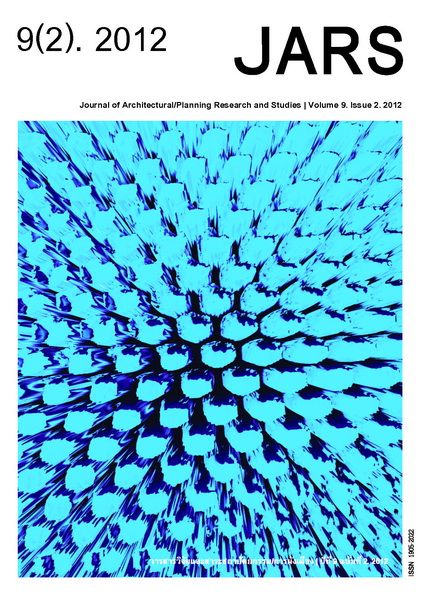Expressions and Psychology of Exposure in Contemporary Architecture
Main Article Content
Abstract
The topic of exposure has long been part of the architectural discourse, and how it is interpreted and demonstrated in architecture is continuously evolving. This paper explores the trends in how exposure has been understood and exploited in architectural design, discussing the varying degrees to which architects expose certain components of their buildings--or even the occupants themselves in certain cases--that would typically be internally hidden. The subjects of this comparative study include works by practitioners from both inside and outside of the discipline of architecture, such as Mies van der Rohe, Herzog & de Meuron, Richard Rogers and Renzo Piano, Rem Koolhaas, Shigeru Ban and SANAA Kazuyo Sejima and Ryue Nishizawa and the fashion designer Hussein Chalayan. The findings reveal that these designers have strategically manipulated the idea of exposure to evoke emotional and psychological responses that are far superior in their complexity and ambiguity than what has previously existed.
Downloads
Article Details

This work is licensed under a Creative Commons Attribution-NonCommercial-NoDerivatives 4.0 International License.
All material is licensed under the terms of the Creative Commons Attribution 4.0 International (CC-BY-NC-ND 4.0) License, unless otherwise stated. As such, authors are free to share, copy, and redistribute the material in any medium or format. The authors must give appropriate credit, provide a link to the license, and indicate if changes were made. The authors may do so in any reasonable manner, but not in any way that suggests the licensor endorses you or your use. The authors may not use the material for commercial purposes. If the authors remix, transform, or build upon the material, they may not distribute the modified material, unless permission is obtained from JARS. Final, accepted versions of the paper may be posted on third party repositories, provided appropriate acknowledgement to the original source is clearly noted.
References
Colquhoun, A. (2002). Modern architecture. Oxford, New York: Oxford University Press.
Curtis, W. J. R. (1996). Modern Architecture Since 1900. Upper Saddle River, N.J.: Prentice Hall.
Davies, C. (2011). Thinking about architecture: An introduction to architectural theory. London: Laurence King.
Hodge, B., Mears, P., & Sidlauskas, S. (2006). Skin and bones: Parallel practices in fashion and architecture. New York, London: Thames & Hudson.
Koolhaas, R., Mau, B., & Sigler, J. (1995). Small, Medium, Large, Extra Large. Rotterdam, New York: The Monacelli Press.
Moussavi, F., & Kubo, M. (2006). The function of ornament. Harvard University Graduate School of Design, Barcelona: Actar.
Ouroussoff, N. (2006, 28 August). A crystal showcase reflects a city’s glass legacy. The New York Times.
Rowe, C., & Slutzky, R. (1963). Transparency: Literal and phenomenal. Perspecta, 8, 45-54.
Seifert, J. (2007). Architecture beneath the skin, 91 degrees: More than architecture. Santa Monica, CA: Birkhauser Verlag.


